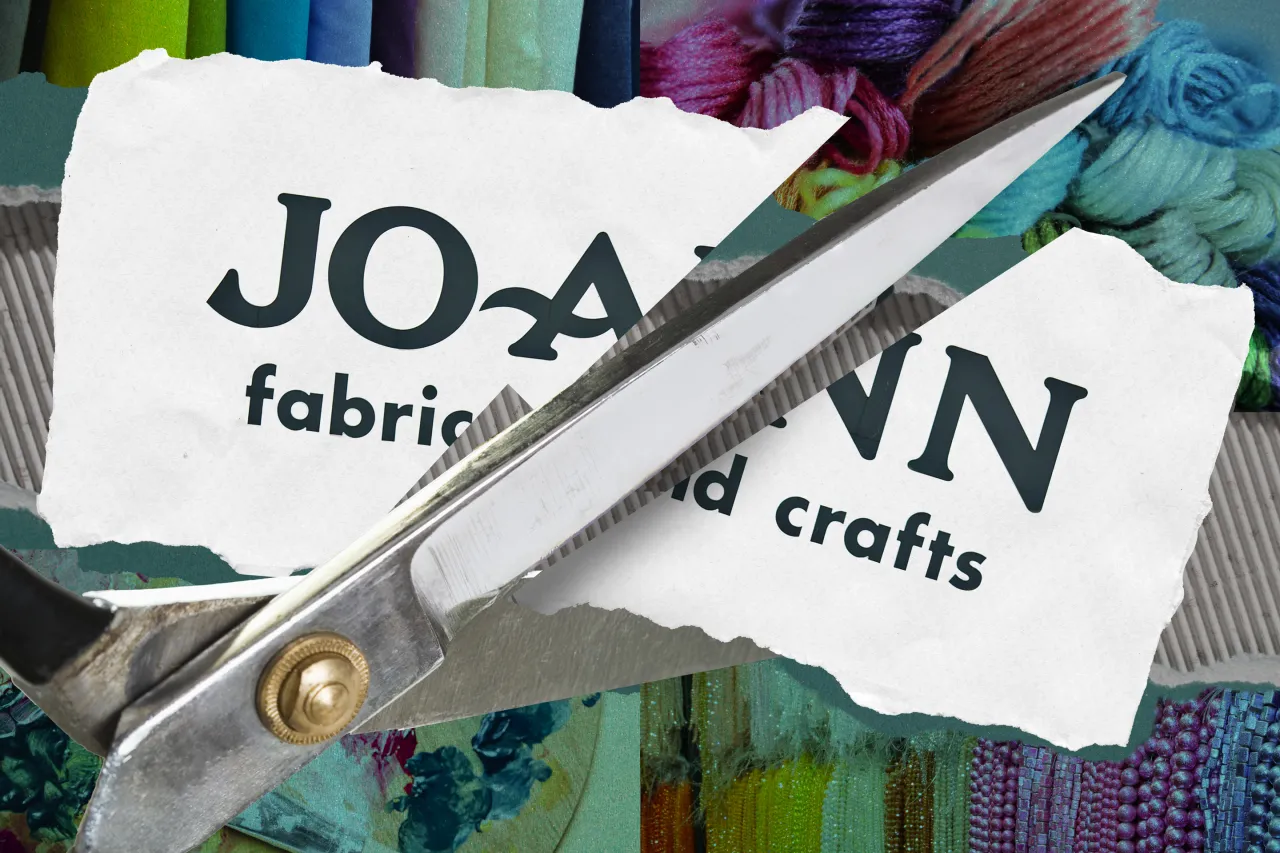Joann Fabrics, once a beloved retail destination for crafters, quilters, and DIY enthusiasts, has faced a stunning downfall, culminating in its recent bankruptcy filing. The company, which thrived for decades as a go-to source for fabrics, sewing supplies, and home decor materials, struggled to keep pace with shifting market trends, economic pressures, and digital competition. In this article, we analyze the factors that contributed to Joann Fabrics’ decline and its eventual financial crisis.
The Rise of Joann Fabrics: A Crafting Haven
Founded in 1943 in Cleveland, Ohio, Joann Fabrics began as a small family-owned business that grew into a national retail powerhouse. The store quickly became synonymous with high-quality fabrics, sewing essentials, and DIY project materials. Throughout the 1990s and early 2000s, the brand expanded aggressively, opening hundreds of stores nationwide to meet the growing demand for crafting and home decor supplies. The company’s success was fueled by:
- A wide selection of fabrics catering to both amateur and professional crafters.
- Frequent discounts and promotions, making crafting more affordable.
- A community-driven approach, including in-store classes and workshops.
- Loyalty programs and coupons that kept customers coming back.
However, as the retail landscape began shifting in the 2010s, Joann Fabrics faced increasing challenges that it struggled to overcome.
The Downfall: What Went Wrong?
1. The Shift to E-Commerce and Digital Competition
The rise of e-commerce giants like Amazon and Etsy drastically changed consumer shopping habits. Customers who once visited Joann Fabrics for their crafting needs began turning to online platforms that offered greater convenience, competitive pricing, and a wider variety of products. While Joann Fabrics attempted to enhance its online presence, its digital transformation was slow and insufficient to compete with the likes of:
- Amazon, which offered craft supplies with faster shipping.
- Etsy, which empowered independent sellers to provide unique and customized materials.
- Michaels and Hobby Lobby, both of which adapted faster to online and omnichannel shopping.
Without a strong digital infrastructure, Joann Fabrics lost significant market share to its competitors.
2. Supply Chain Disruptions and Rising Costs
The COVID-19 pandemic exposed major weaknesses in global supply chains, and Joann Fabrics was severely impacted. The company faced:
- Delays in stock replenishment, leading to empty shelves and frustrated customers.
- Increased raw material costs, making fabric and crafting supplies more expensive.
- Shipping and logistics challenges, affecting the timely delivery of online orders.
- Overstocking of certain items, leading to financial losses as demand fluctuated unpredictably.
These disruptions made it difficult for Joann Fabrics to maintain profitability, further weakening its financial stability.
3. Declining Foot Traffic and Changing Consumer Interests
With the decline of shopping malls and in-person retail experiences, Joann Fabrics saw a significant drop in foot traffic. The shift toward minimalism and fast fashion also contributed to reduced interest in traditional sewing and DIY crafting. While the company attempted to attract younger audiences through:
- Social media campaigns targeting DIY enthusiasts.
- Influencer collaborations with crafting experts.
- Expanding product categories to include home decor and seasonal items.
These efforts were not enough to counteract the larger trend of consumers moving away from traditional crafting hobbies.
4. Heavy Debt and Financial Mismanagement
Joann Fabrics’ financial troubles were compounded by its growing debt. The company underwent a leveraged buyout in 2011 when it was acquired by private equity firm Leonard Green & Partners. While this initially fueled expansion, it also saddled the company with significant debt. As interest rates rose and operational costs increased, Joann Fabrics struggled to stay afloat, facing:
- Rising operational expenses, including store leases and payroll.
- Increased competition, limiting revenue growth.
- Failure to adapt quickly to financial pressures, leading to declining profit margins.
Despite attempts to restructure debt and cut costs, the financial burden proved too great to overcome.
Bankruptcy Filing: The Final Straw
In [Year], Joann Fabrics officially filed for bankruptcy, citing unsustainable financial losses and rising operational costs. The filing marked a dramatic fall from grace for a company that had once been a leader in the crafting retail industry. As part of the bankruptcy process, Joann Fabrics may:
- Close underperforming stores to reduce expenses.
- Renegotiate leases and debts to ease financial pressure.
- Seek new investors or buyers for potential restructuring.
- Attempt a digital transformation to compete in the modern retail landscape.
Lessons from Joann Fabrics’ Downfall
The decline of Joann Fabrics serves as a cautionary tale for retailers. Key takeaways include:
- Adaptability is Key: Businesses must evolve with changing consumer habits and technological advancements.
- E-Commerce Integration: A strong digital presence is essential for retail survival in the modern era.
- Financial Management: Managing debt effectively is crucial to long-term sustainability.
- Customer-Centric Strategies: Engaging and retaining a loyal customer base is vital for continued growth.
What’s Next for Joann Fabrics?
While the bankruptcy filing signals a major setback, the future remains uncertain. The company may restructure, downsize, or seek acquisition to stay afloat. If Joann Fabrics can successfully pivot towards a digital-first strategy, optimize its supply chain, and connect with modern crafting audiences, it may still have a chance at revival.
For more updates on business trends and industry insights, stay tuned to our website.




